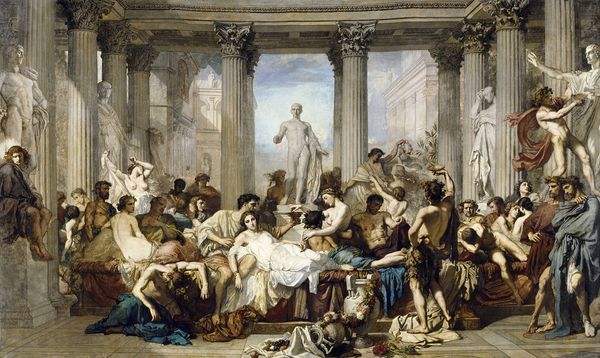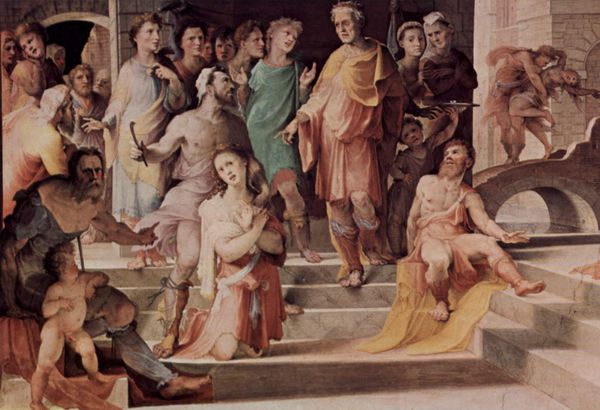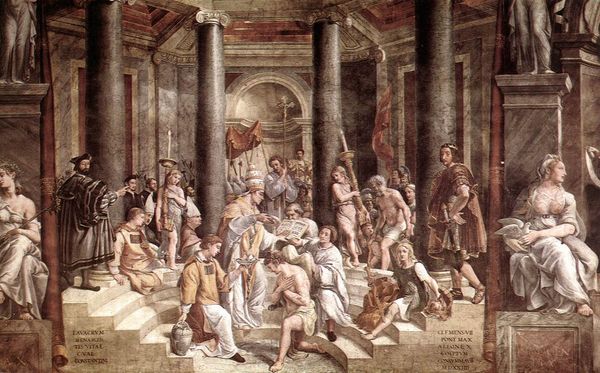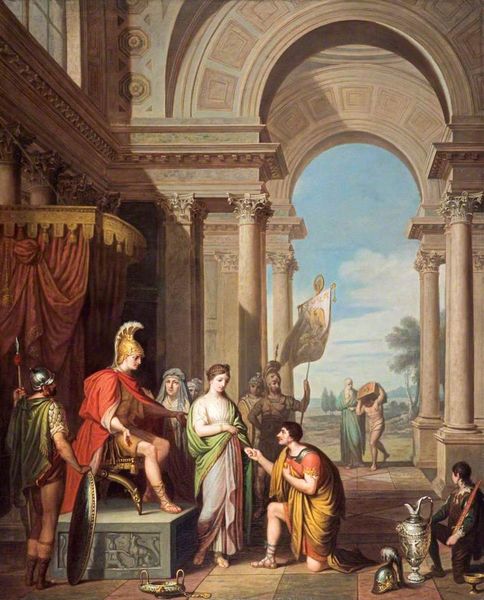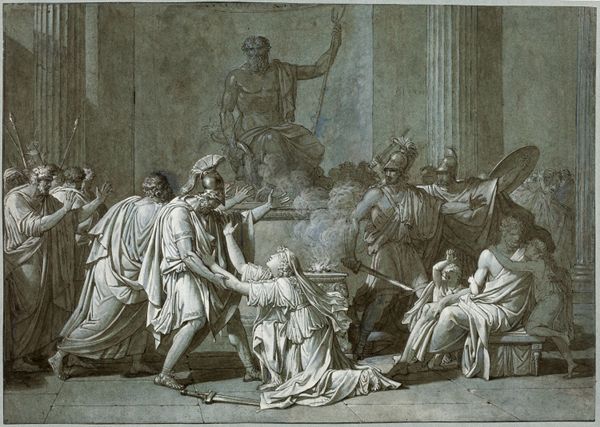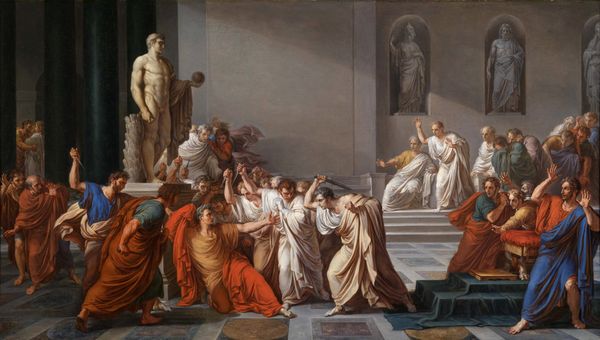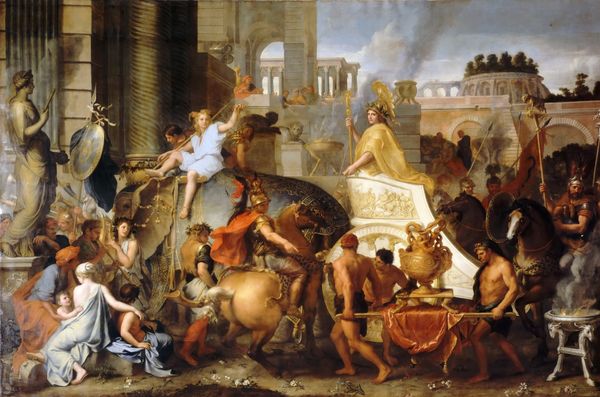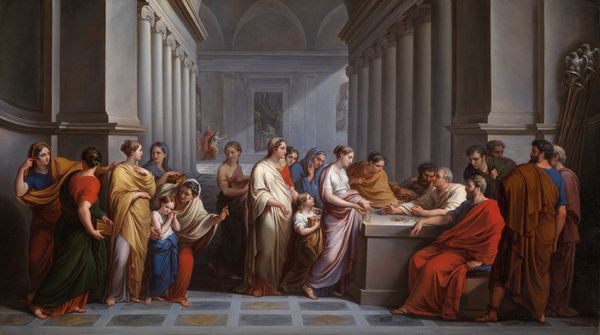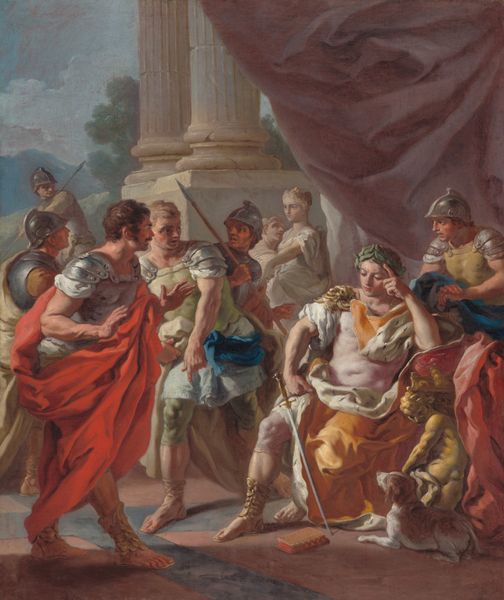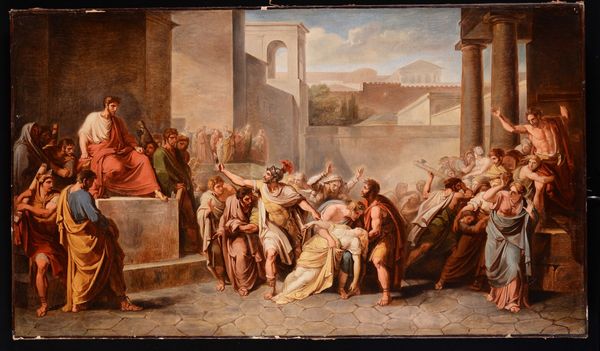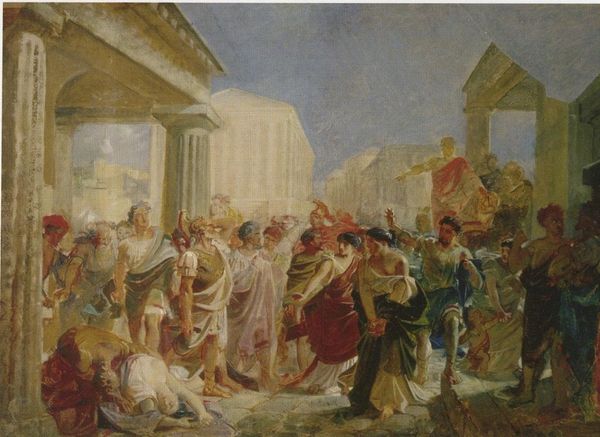
Ulysses at the court of Alcinous 1815
0:00
0:00
francescohayez
National Museum of Capodimonte, Naples, Italy
#
automotive concept
#
charcoal drawing
#
possibly oil pastel
#
oil painting
#
roman-mythology
#
neo expressionist
#
underpainting
#
mythology
#
facial study
#
italy
#
3d art
#
portrait art
#
digital portrait
Dimensions: 381 x 535 cm
Copyright: Public domain
Curator: Before us stands "Ulysses at the court of Alcinous," a Neoclassical oil painting completed in 1815 by Francesco Hayez. The scene illustrates a moment from Homer's Odyssey. What are your immediate impressions? Editor: Melancholy. Despite the palatial setting, the gathering of figures feels subdued. There's a sense of weight and contemplation. That figure with his face in his hands strikes me, in particular, as the focal point for the mood. Curator: Indeed. Hayez, an Italian artist, deploys the visual language of Neoclassicism—clean lines, ordered composition—to depict Ulysses recounting his harrowing journey to the Phaeacian court. Considering the historical moment in which it was created, this precision reflects the Napoleonic obsession with order after a decade of revolution, visible across Europe. Note the cool color palette as a stylistic reflection of the period’s artistic trend. Editor: The symbolism is rich. The architecture mirrors the Enlightenment’s reverence for reason, and this structure, which, in a broader view of mythology, represents the pinnacle of society's development. Yet, the statue in the background – a Minerva perhaps – adds another layer. Why choose this statue, so prominent in its position, above the assembled crowd? Curator: Excellent question. Minerva as the goddess of wisdom is essential in how this work of Hayez comes together. Hayez is making a bold statement in using Ulysses and that moment in his retelling as symbolic of the time period of which this painting was created: of the restoration and its intellectual achievements and political power struggles. Editor: I wonder, too, about the choice of depicting the moment of storytelling itself. Ulysses isn’t engaged in a heroic act, but rather, is vulnerable, dependent on his rhetorical skills. The lyre on which this story rests to enchant, too, holds weight, as the craftsmanship and detail call to how it holds Ulysses spell bound. Curator: Very astute. The act of narration itself becomes a central motif. Storytelling is, of course, a way of constructing and passing on cultural identity. This work engages with labor but makes a nod to how myth perpetuates it, to an effect, I see Hayez wanting us to recognize the production that storytelling creates. Editor: In conclusion, what initially appears as a straightforward depiction from the Odyssey proves to be far more intricate and emotionally resonant upon closer inspection. Curator: I agree. We observe in it a cultural tapestry woven through symbols of power, history, and our storytelling practices.
Comments
No comments
Be the first to comment and join the conversation on the ultimate creative platform.
